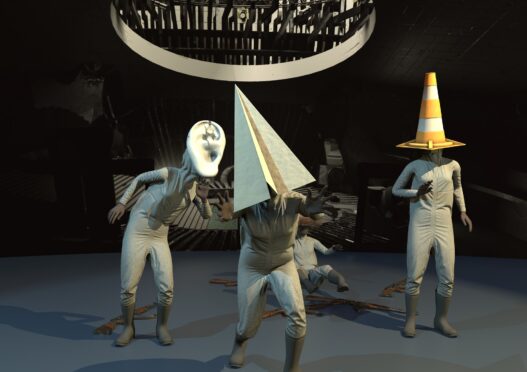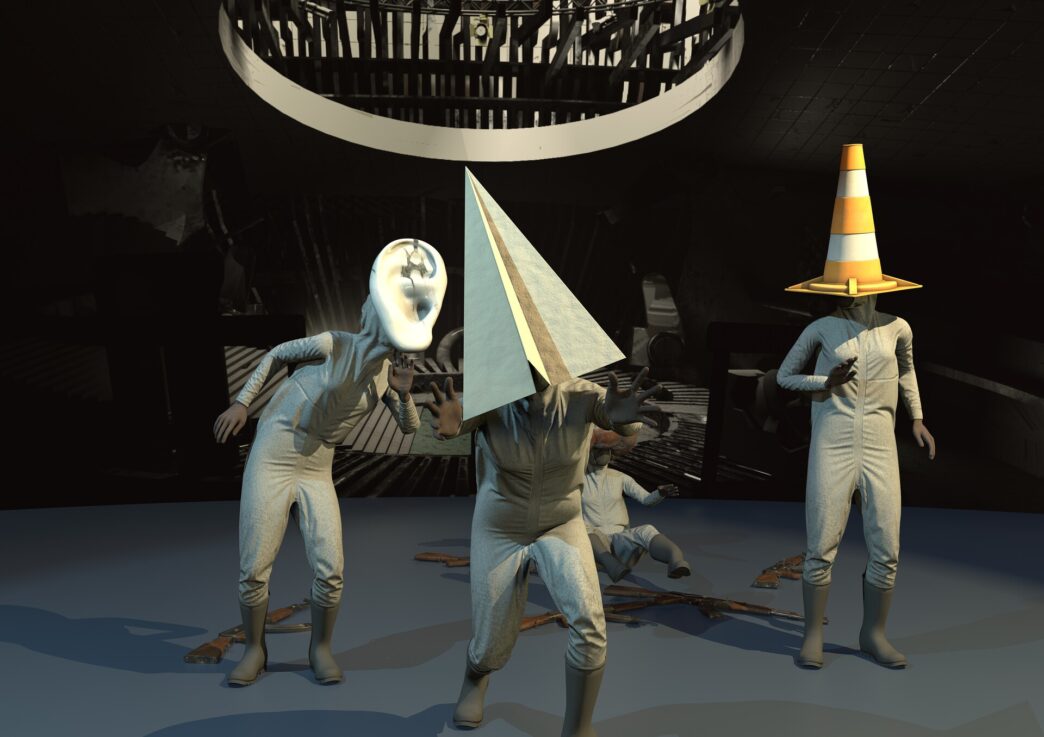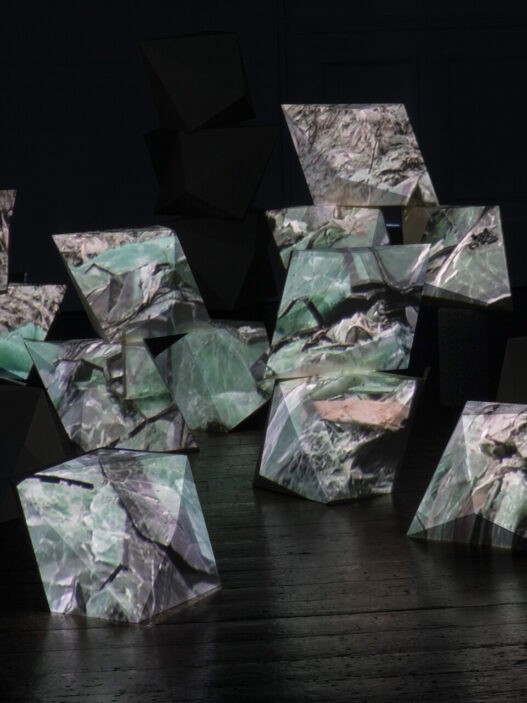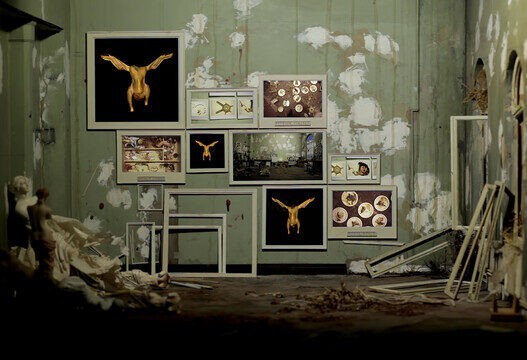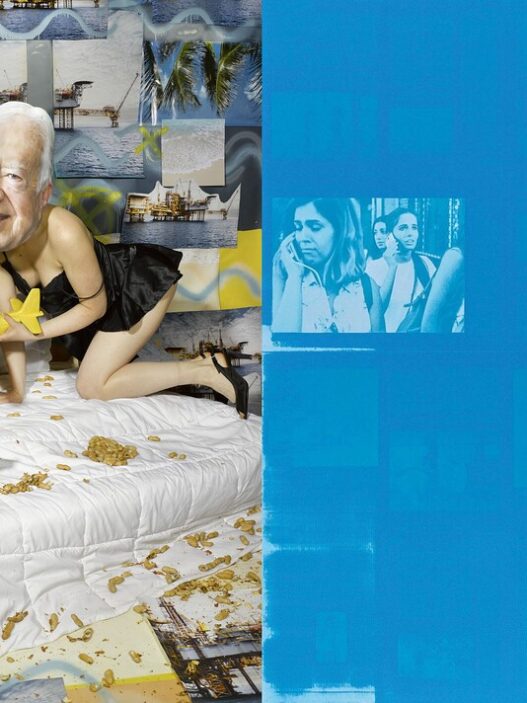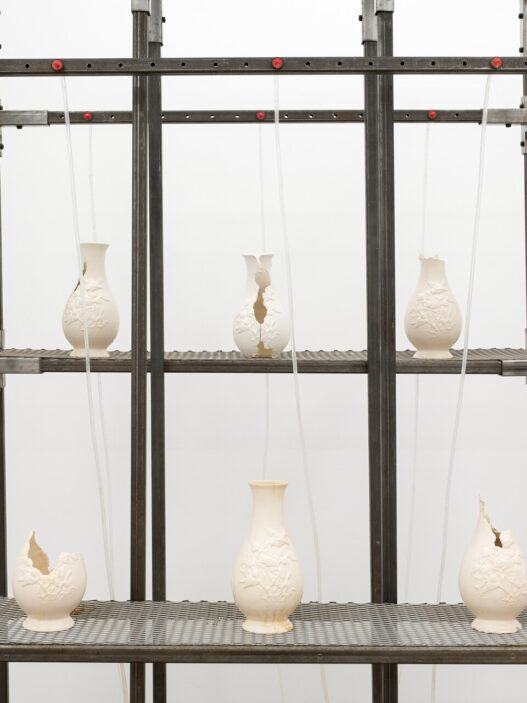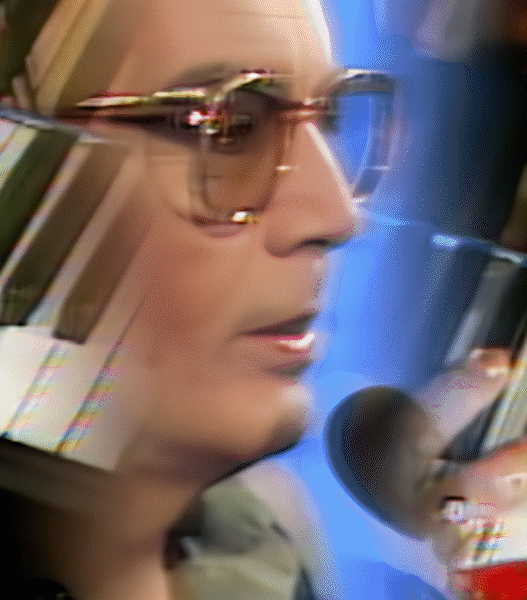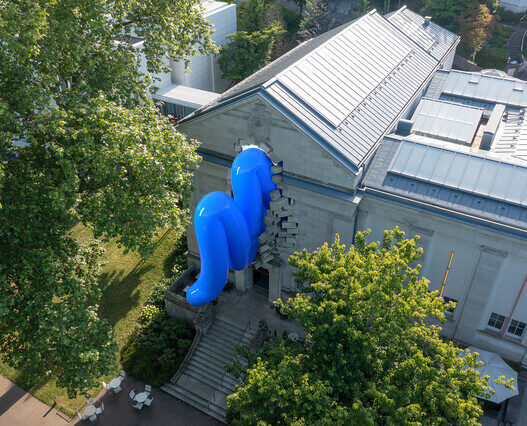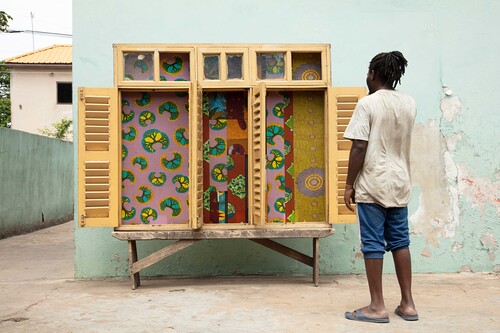July 7–October 3, 2022
Artist talk: July 6, 5:30pm
Opening: July 6, 7pm
By blending the lines between art, theater, and exhibition-making, Rana Hamadeh’s operatic approach explores several frameworks for group study and thought. Her multi-year projects progress in logical chapters, taking the form of expansive soundscapes with intricate network architectures, mechanical interactions, video installations, stage sets, texts, and talks. Her work primarily considers the linguistic, juridical, and performative infrastructures and technologies of justice, interpreting justice via modes of measurement, spectacle, and “machinic opera.”
Standard Deviation II by Hamadeh will take up the entire Edith-Russ-Haus for Media Art. It consists of a brand-new time-based audiovisual networked media project that spans the two levels of the building, transforming the exhibition rooms into a single, dynamic theatrical machine. The most recent work in Hamadeh’s Standard Deviation series, a long-running discursive umbrella project called The Destiny Project (2020-), is this tentacular, cacophonous installation.
The Destiny Project is interested in investigating how desire is produced, consumed, circulated, and expressed in today’s global public debate. It is especially sensitive to the economies, technologies, and destinies/destinations of desire as they emerge in and are impacted by areas like predictive analytics and new ethical norms pertaining to algorithmic justice and data justice.
With the help of the central conceit of the Sophoclean tragedy Oedipus Rex, Standard Deviation II examines the relationships between desire, reproduction, derivation, and self-similarity. The work conducts a reading of Sophocles’ play—that is, a reading of Sophocles’ “figuration of tragedy”—as a machine and technology of endurance rather than recounting the tragic misfortunes of Oedipus, king of Thebes, whose grievous journey of self-discovery unfolds at the height of the Theban plague.
This work, among other narrational interventions, switches the emphasis from Oedipus to his father, who, according to the myth, is the original recipient of the curse-prophecy as a result of his purported kidnapping, rape, and murder of young Chrysipus, the son of Pelops. A “tragedy of reproduction by virtue of derivation and self-similarity” is how the story is reframed as a result of this change. Is becoming a father Oedipus the fate of every Oedipus? Is it every proxy’s fate to become its source?
In Standard Deviation II, a number of automated processes repurpose historical information to respond to modern issues while also experimenting with visual and aural languages to create a new lexicon that connects technology and myth. In order to allow one medium to intrude itself into another and function inside it, Hamadeh has continuously experimented with the possibilities of remediation. This transition of 3D animated work into a time-based visual, acoustic, and networked-media show is the result of those experiments. With this technique, the audience’s interaction with their presumed and mandated spectatorial position is amplified, complicated, and destabilized.
The disjointed images resemble computer game cutscenes and range from nightmares to hypnosis, horror to fantastical tableau vivants. They transform Oedipus Rex’s plays into a collection of virtual locations, where the surreal/nightmarish scenery and disorienting music chart out, accommodate, and enhance the tragedy’s profound emotional journeys. While doing so, the piece charts the dramatic topography of the old play, tracing the peaks and valleys of its tensions and anxieties, temporal and psychological entanglements, and modalities of approach. Parallel histories, fictions, symbols, codes, and relationships serve as the backdrop for everything.
The two floors of the Edith-Russ-Haus are home to a system of interconnected installations and interplaying acoustic zones that serve as a dramaturgical marker of the work’s intensities as well as a structuring score to guide audience movement across the space. The architectural areas that Hamadeh originally designed for the 3D modeled worlds of the first chapter of Standard Deviation are extended into the actual space of the Edith-Russ Haus. This audiovisual system is affected by a network of programmable devices that act as a link between the working machines in the animated movie and the actual exhibition venue. The exhibition is a cacophonous and immersive experience that combines narrative, emotive, and mechanical activities.
Recent issues with the relationships between desire and destiny and their reproduction economics are raised by Sophocles’ understanding of tragedy. Oedipus Rex, despite being an ancient literature, is nevertheless useful today for situating these ties in discussions about technology and mediation as well as for thinking through these relationships themselves. How do we express and deal with tragedy in today’s hyper-mediated social reality? is the question posed by Standard Deviation II. Can such a comprehensive approach to mediation and correction enable us to have varied desires for the world in addition to having different experiences of it?
Rana Hamadeh was the 2021 recipient of the Media Art Grant from the Foundation of Lower Saxony at the Edith-Russ-Haus.
Katharinenstraße 23
D-26121 Oldenburg
Germany
Hours: Tuesday–Friday 2–6pm,
Saturday–Sunday 11am–6pm
info@edith-russ-haus.de









